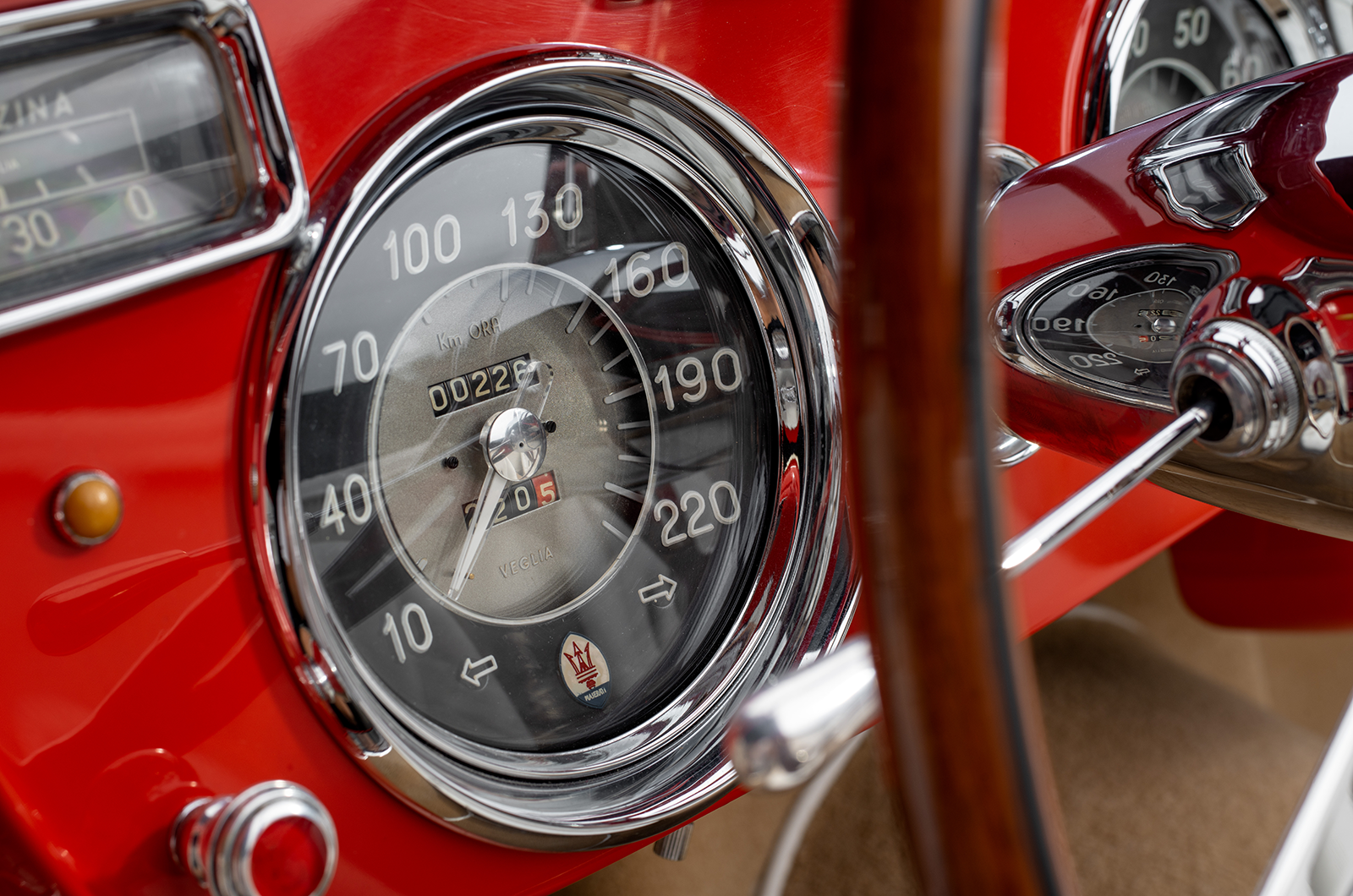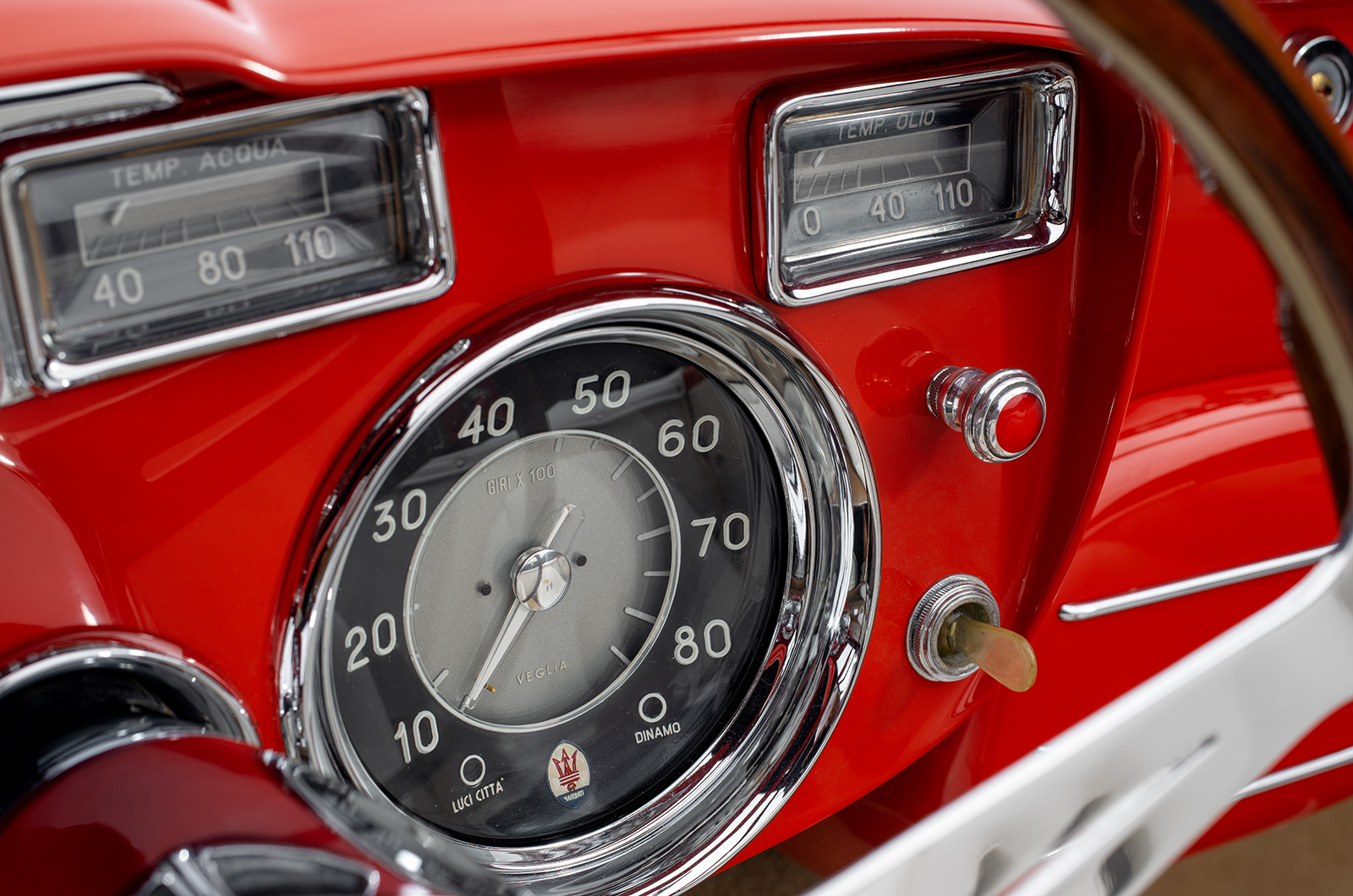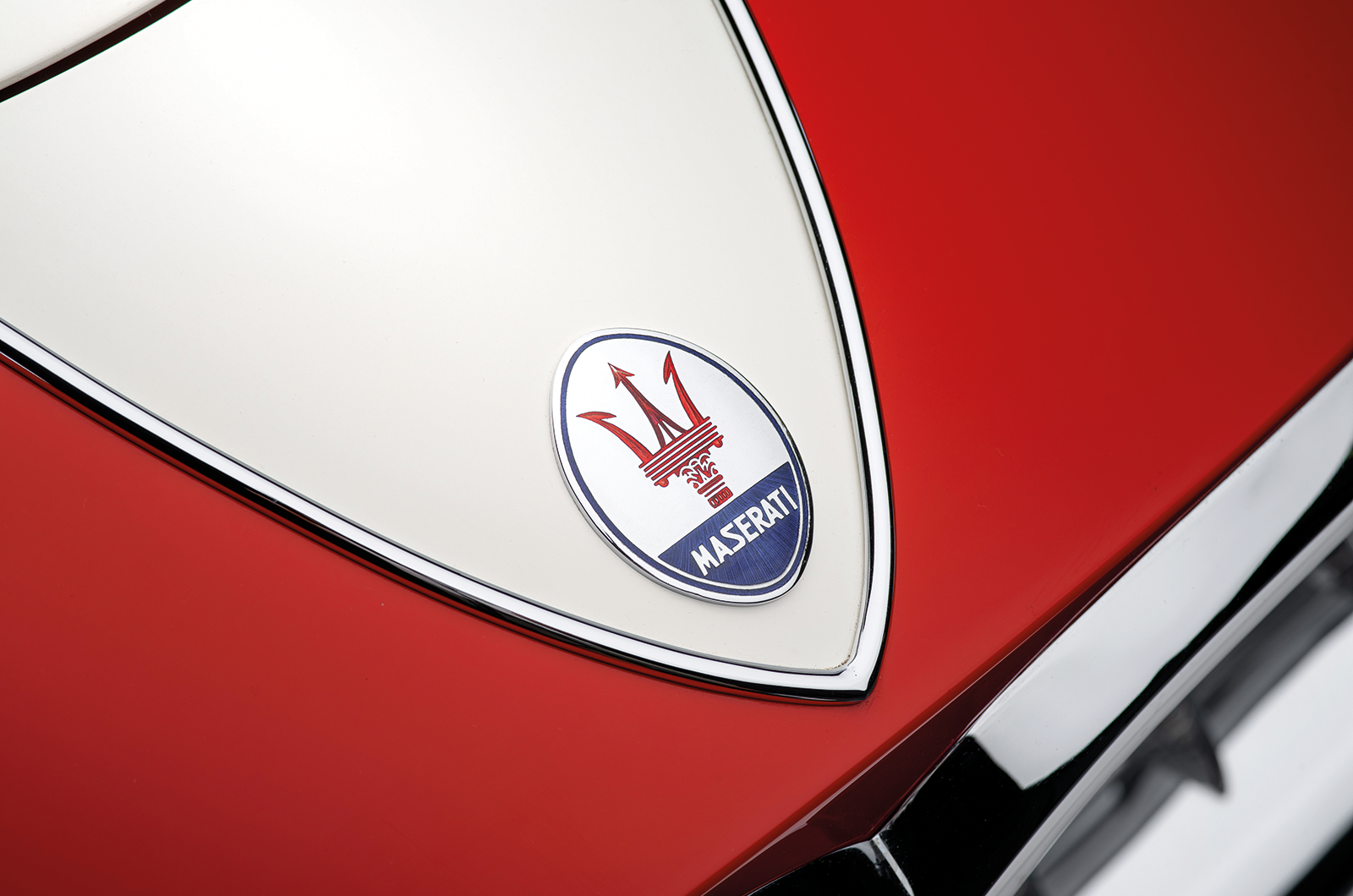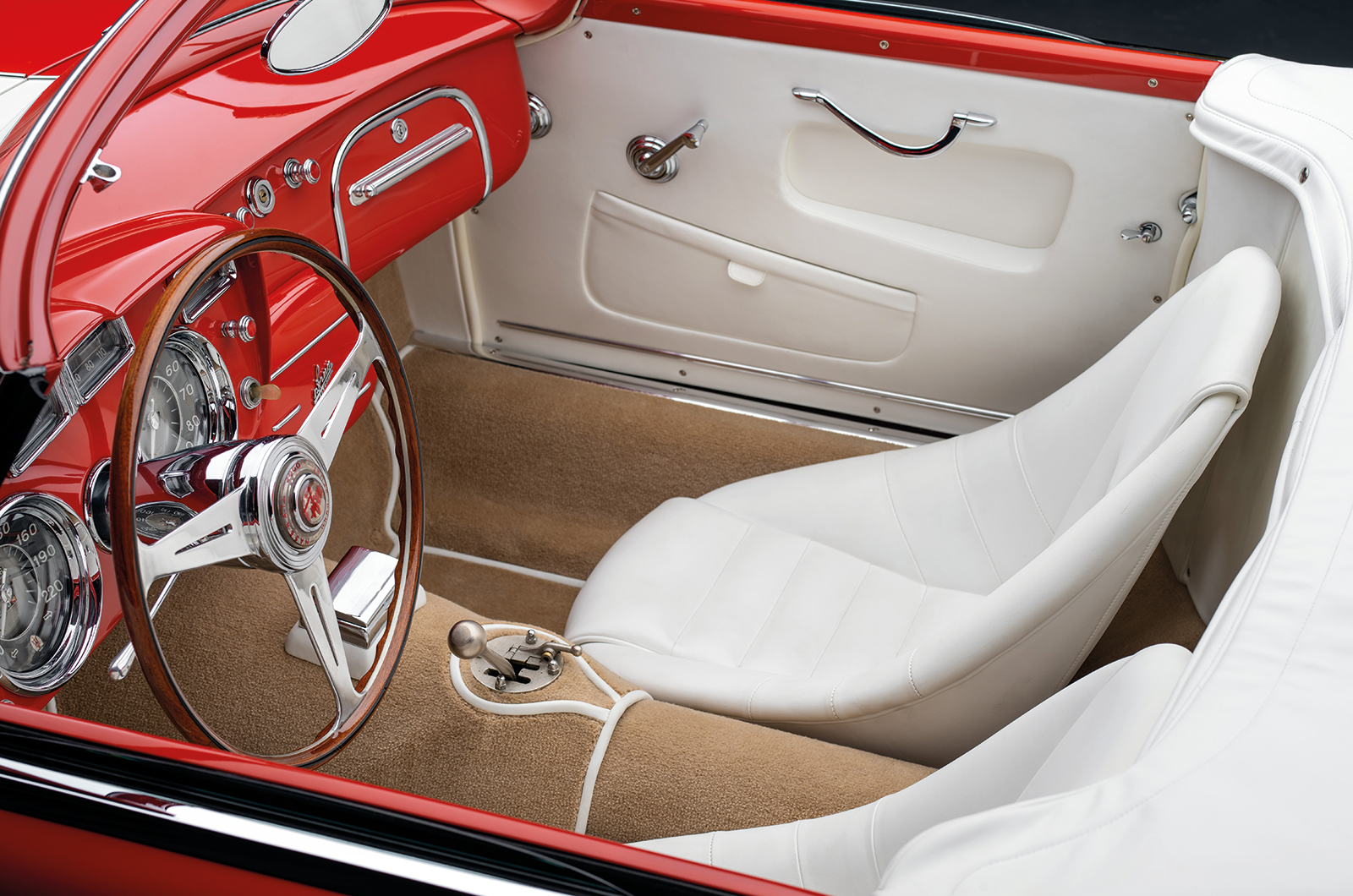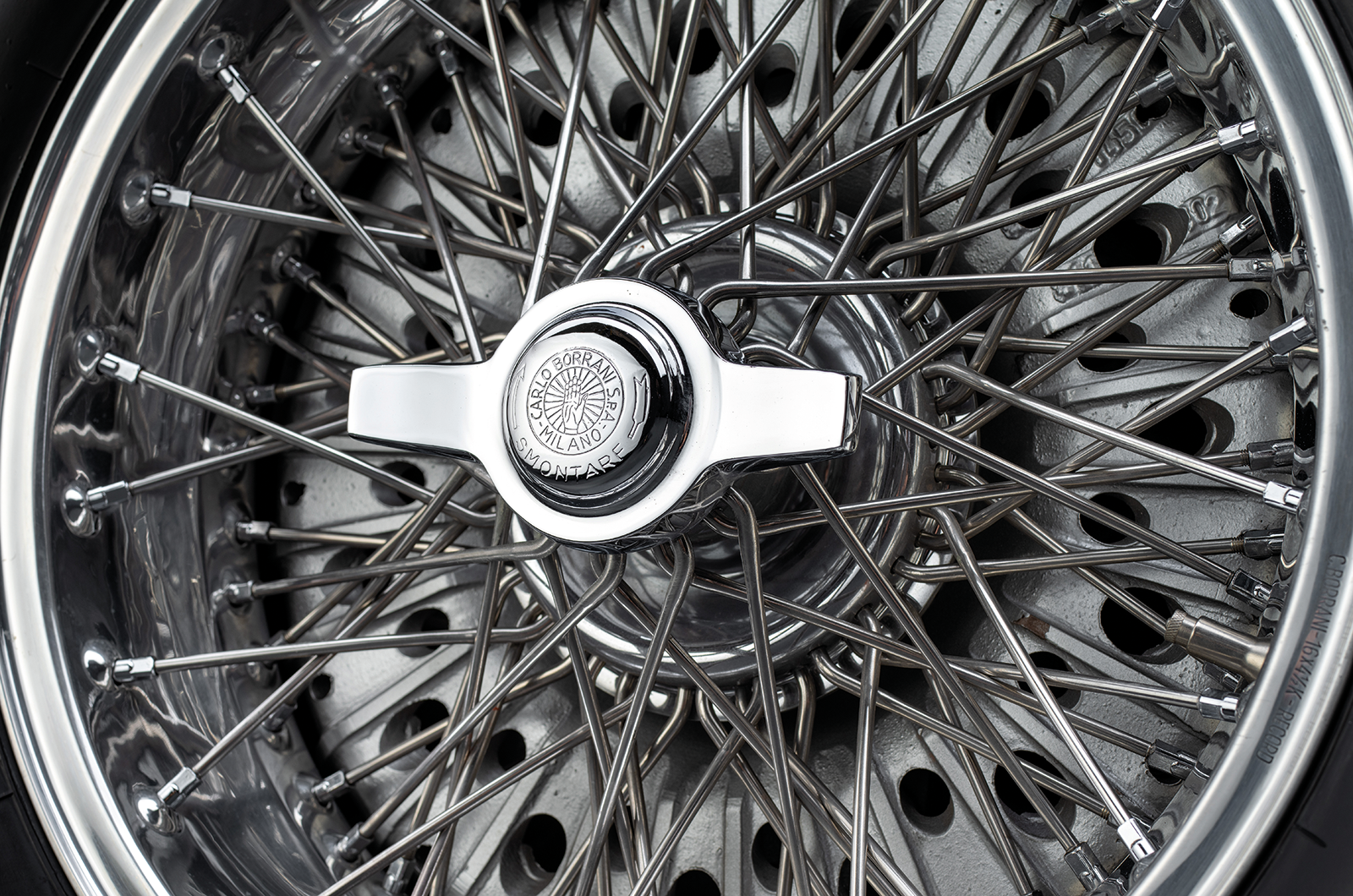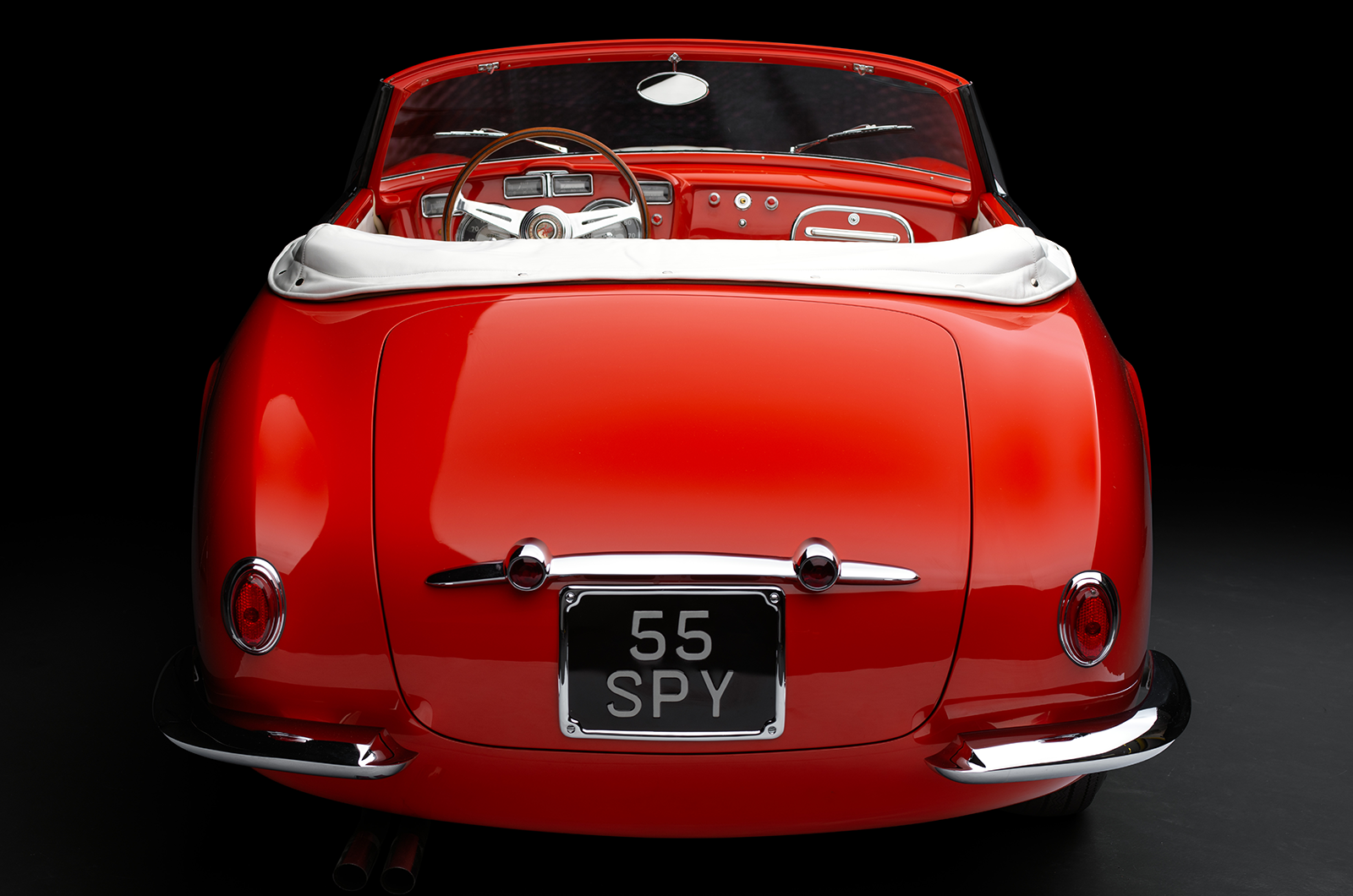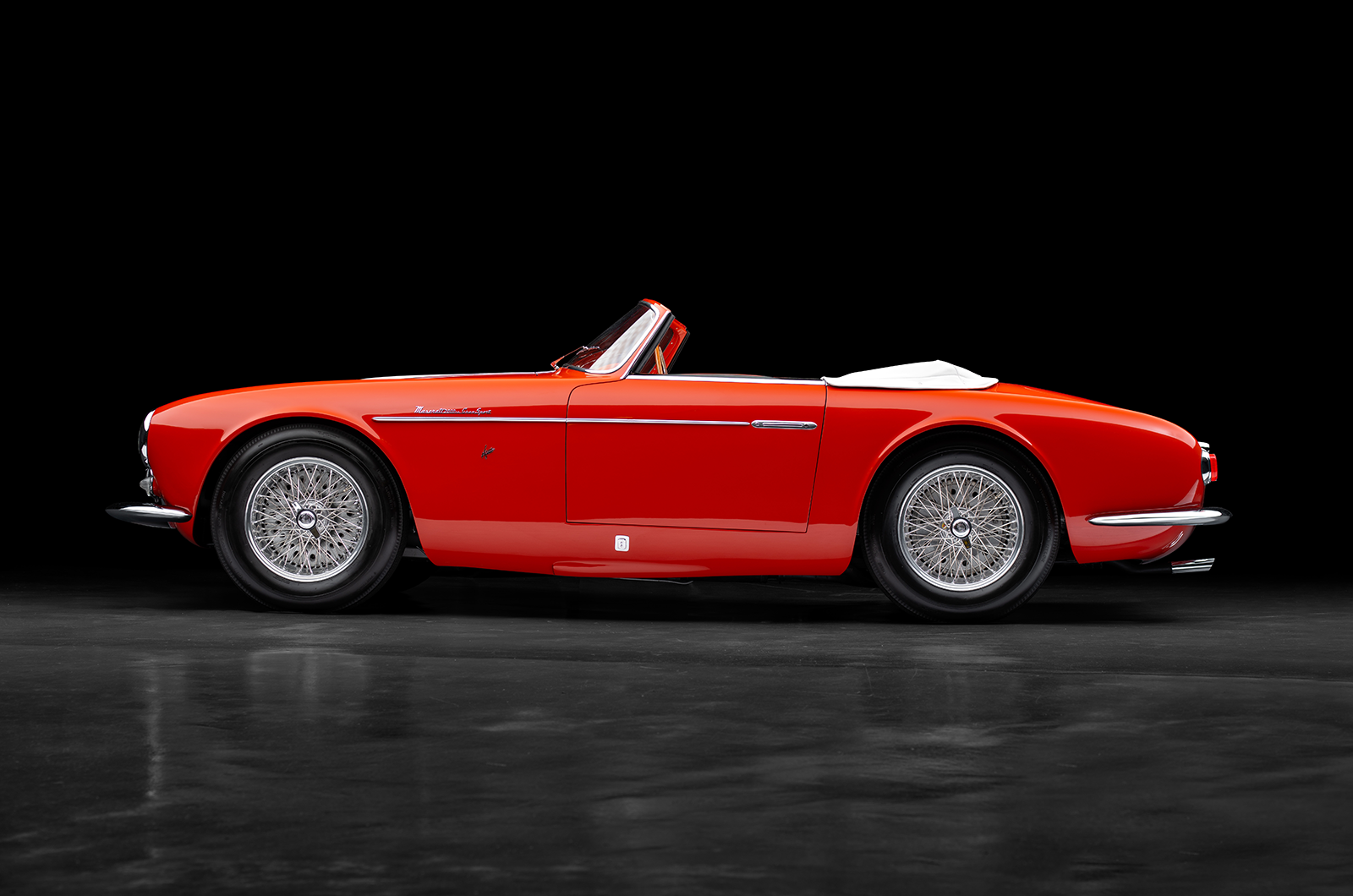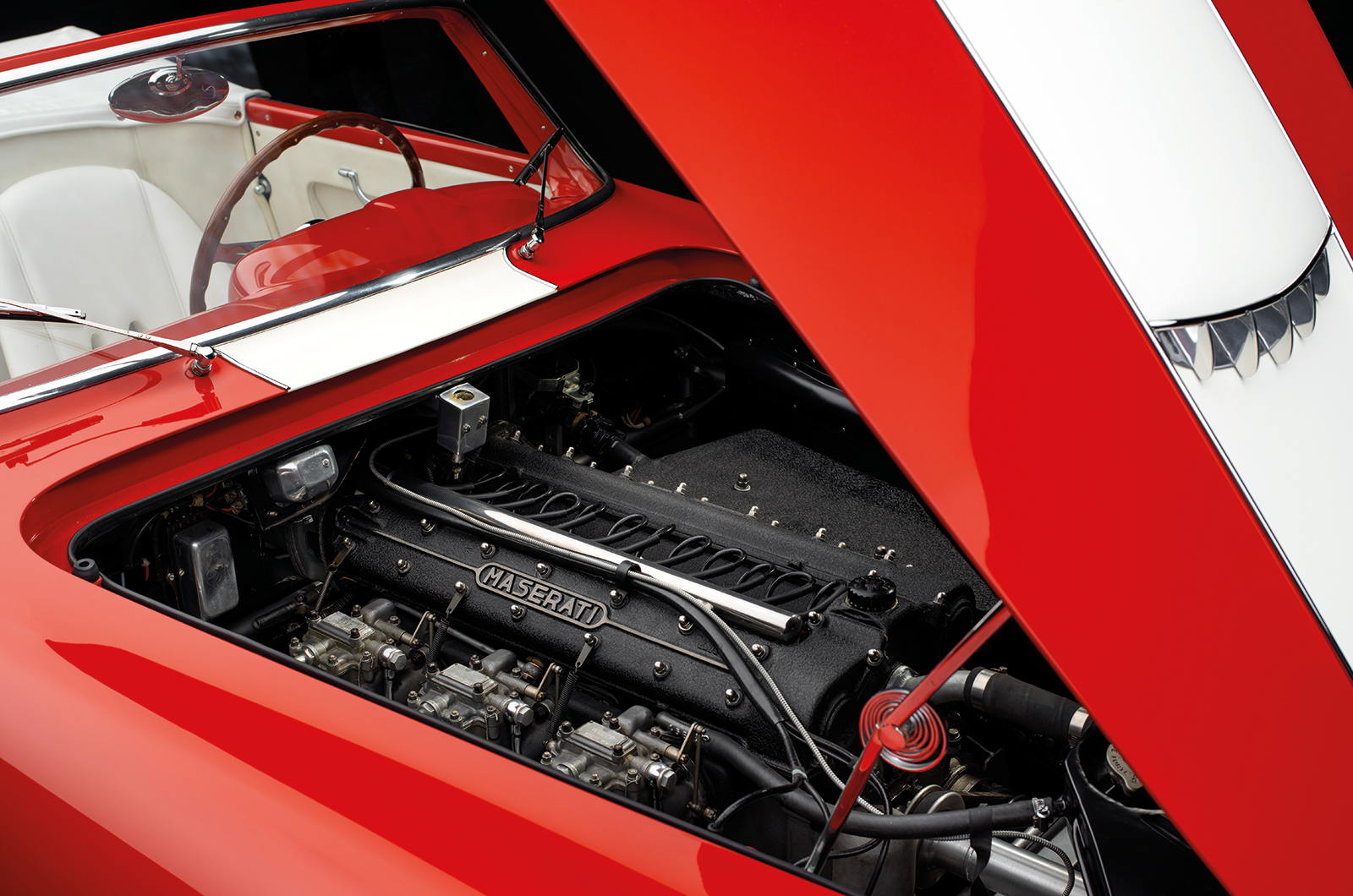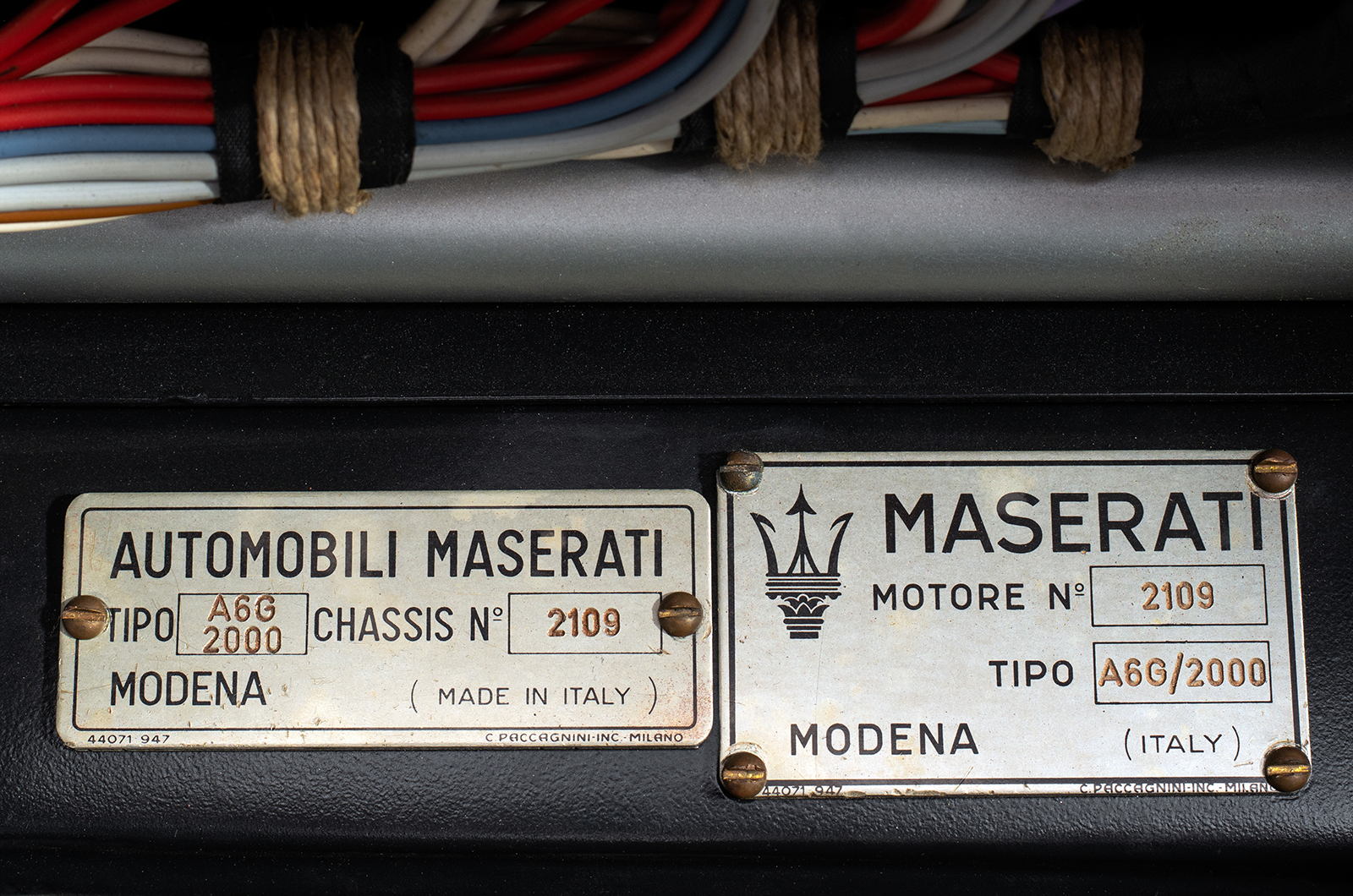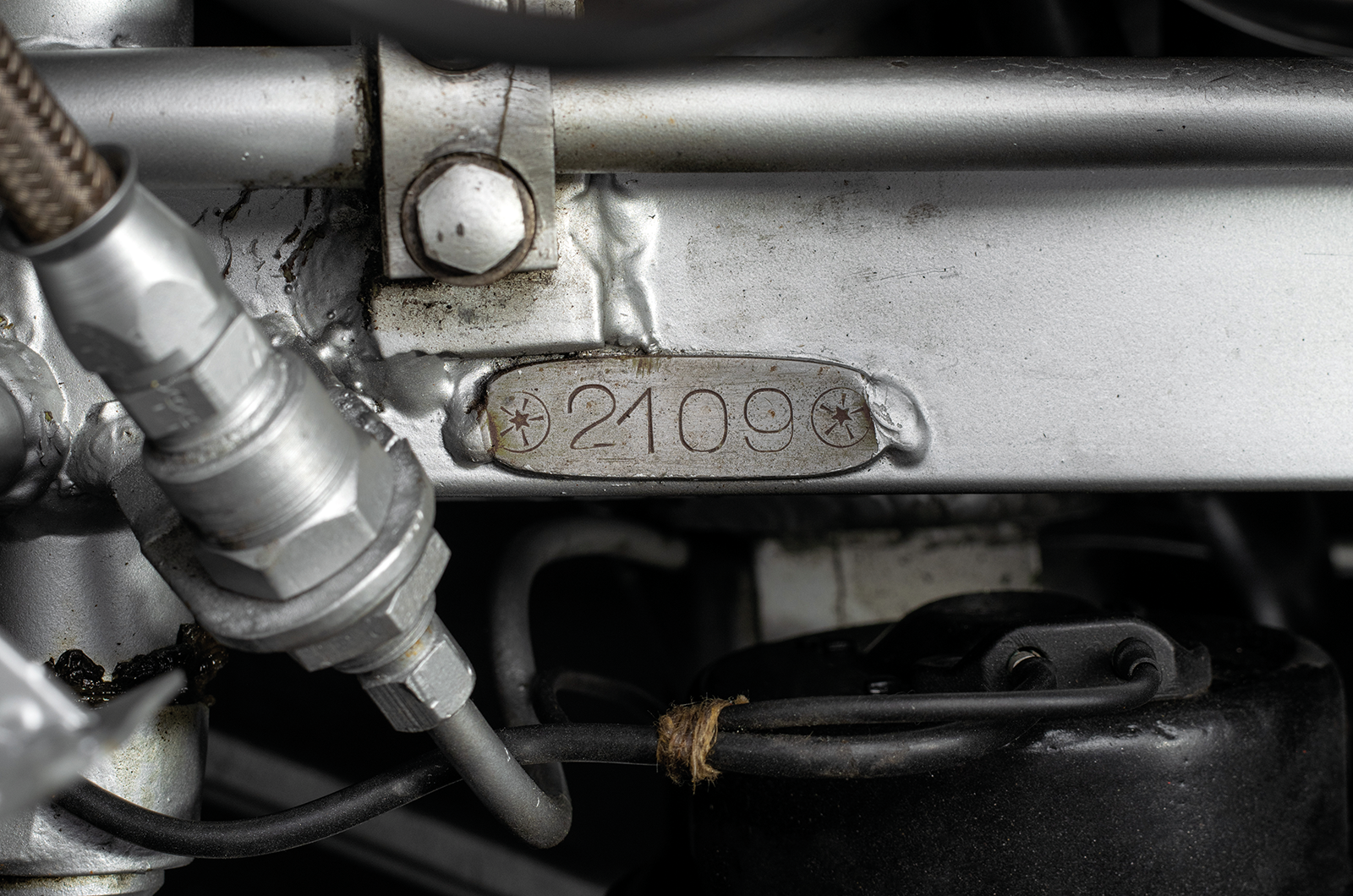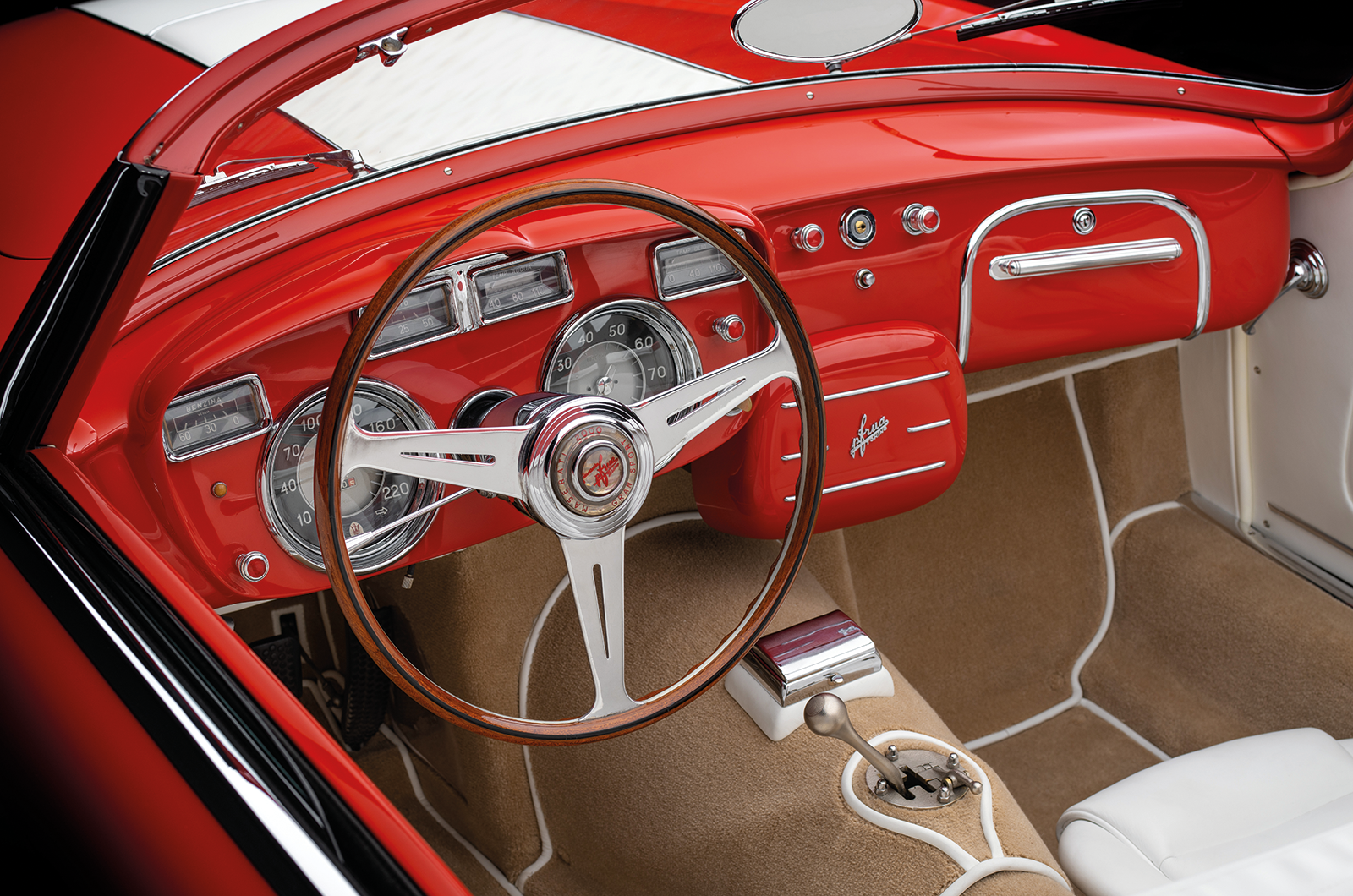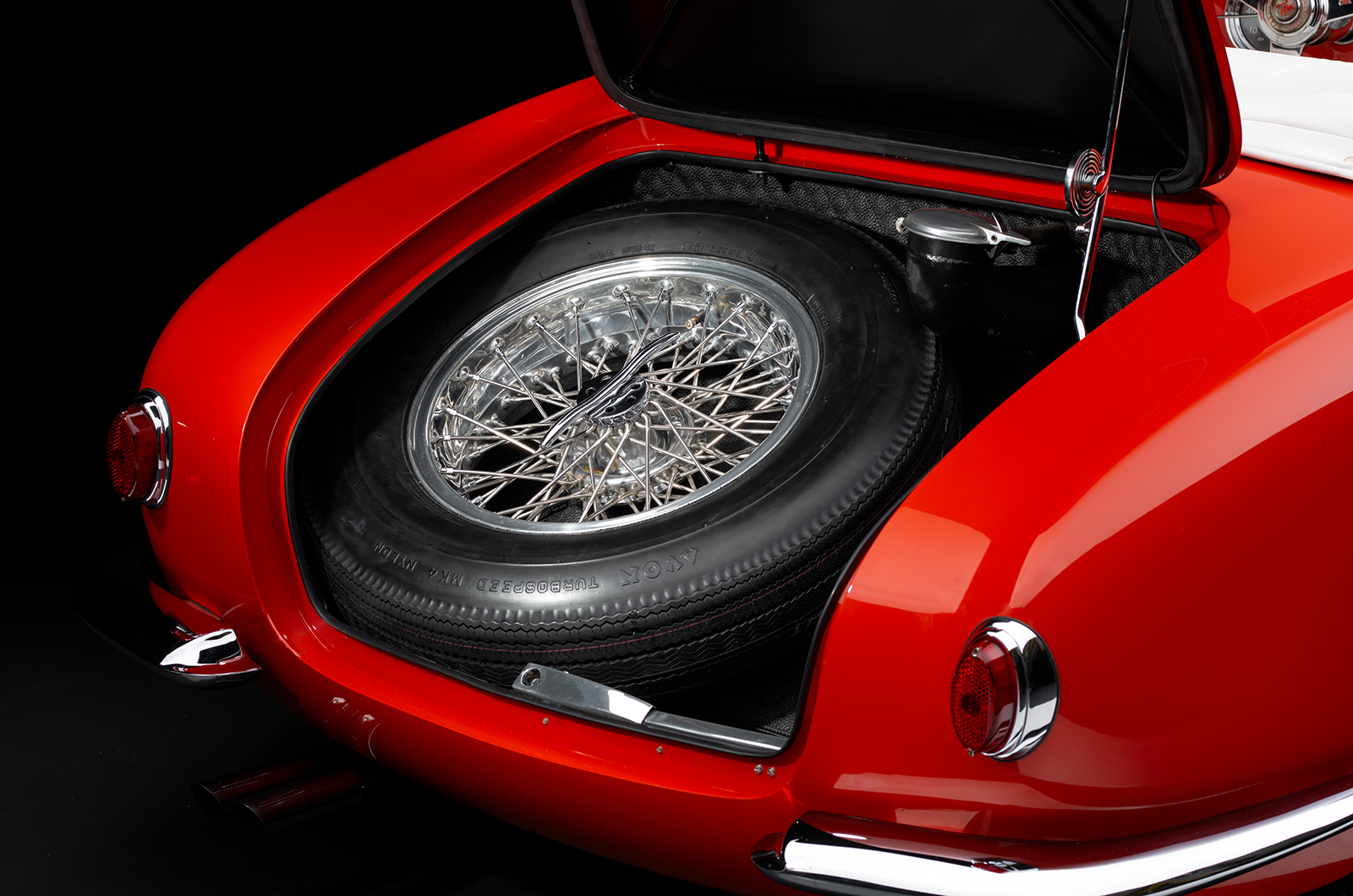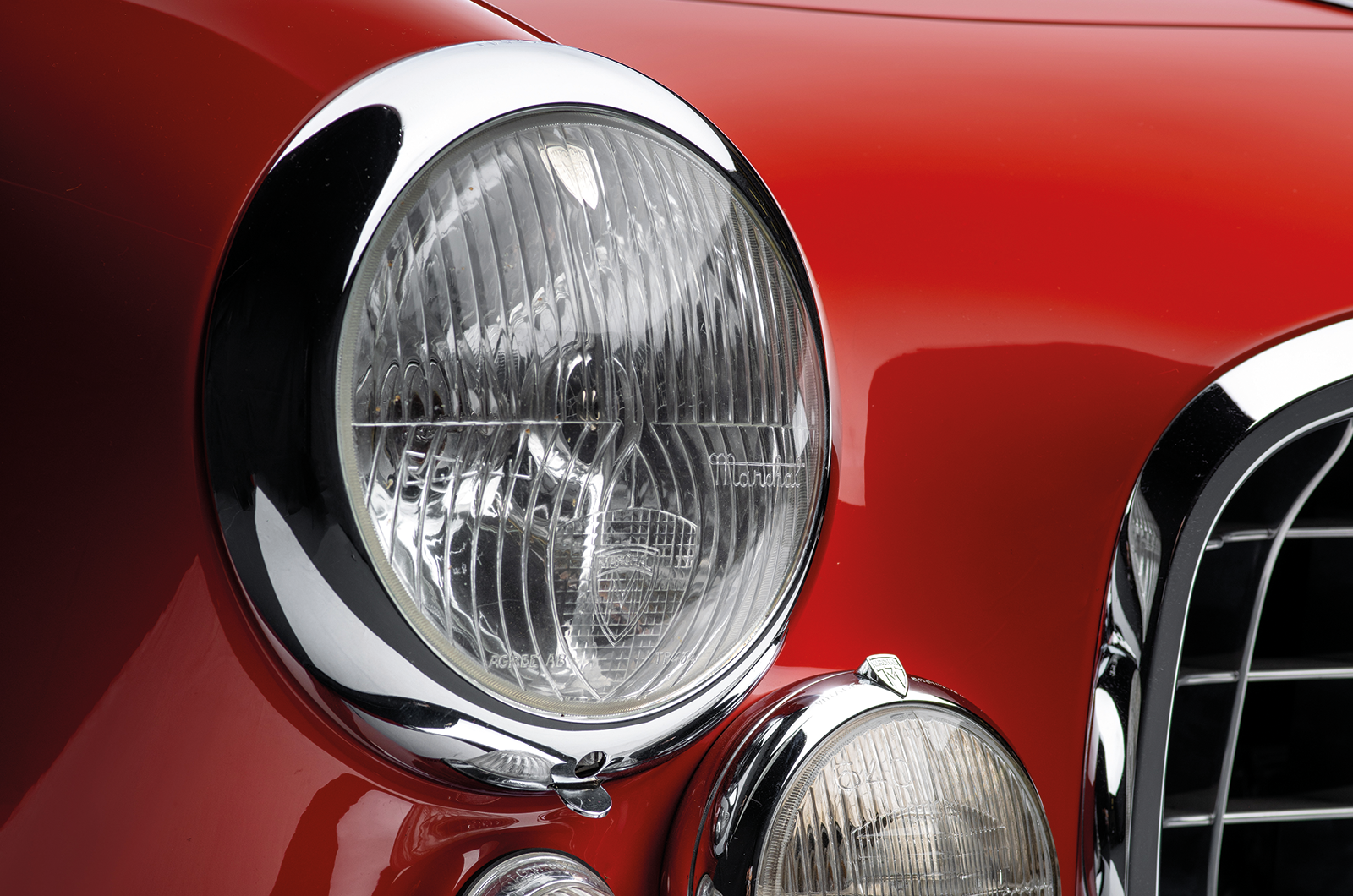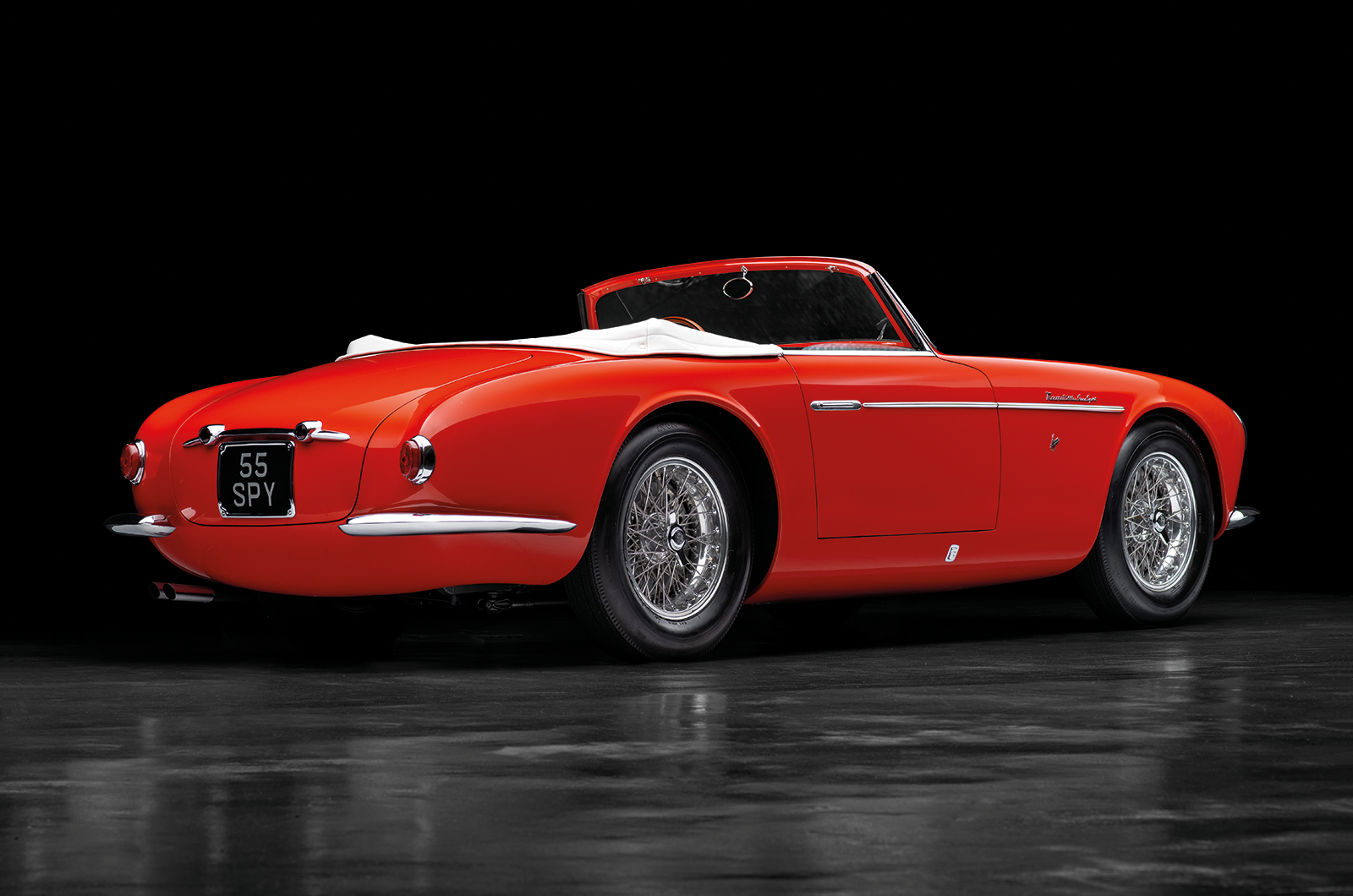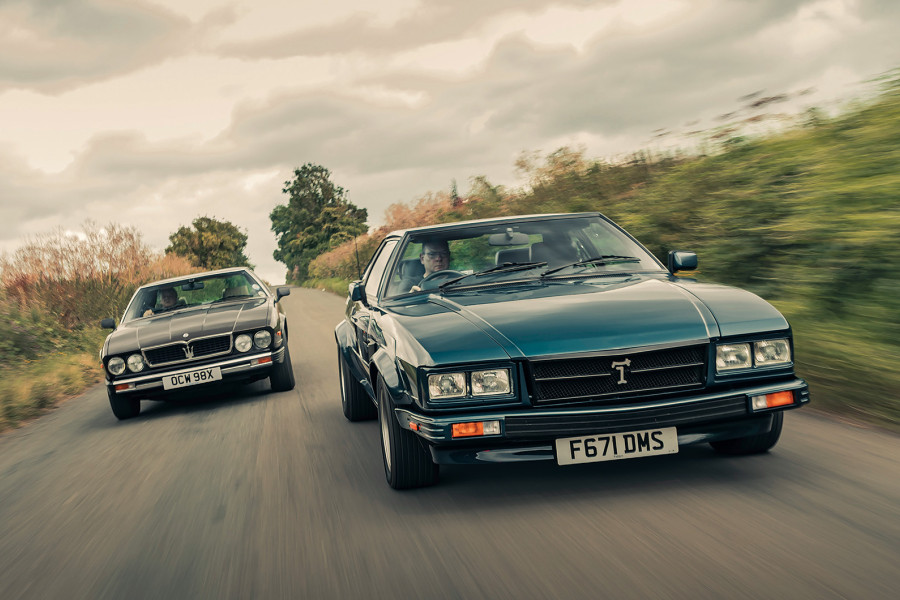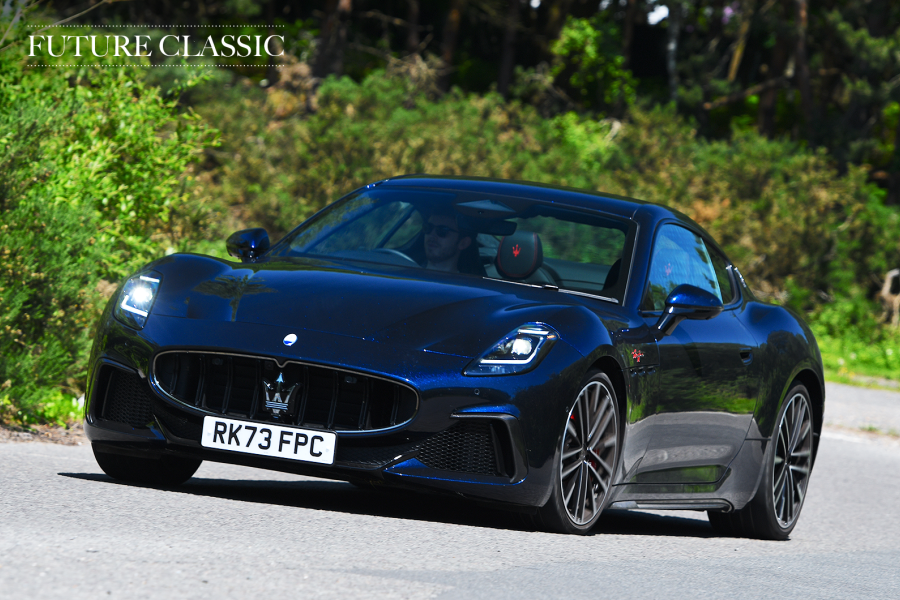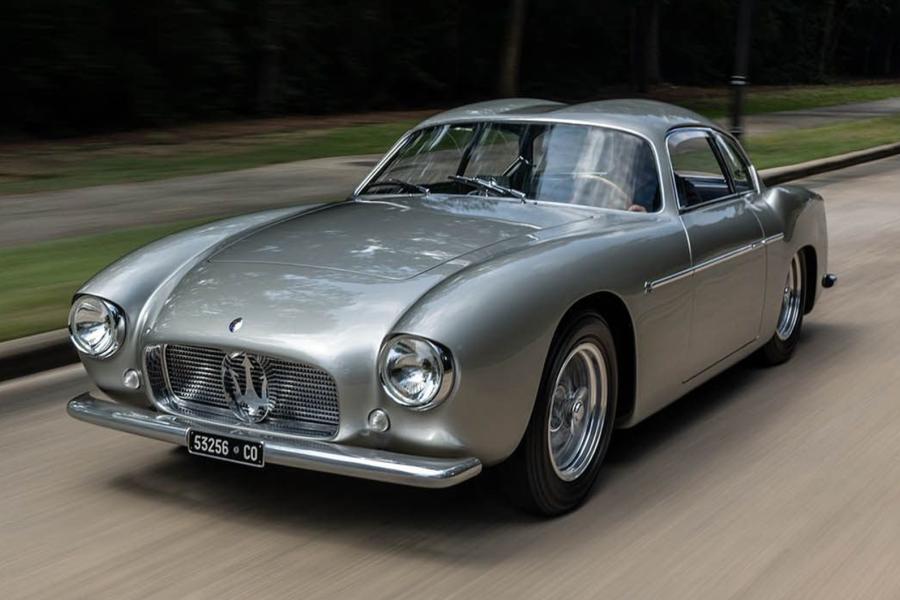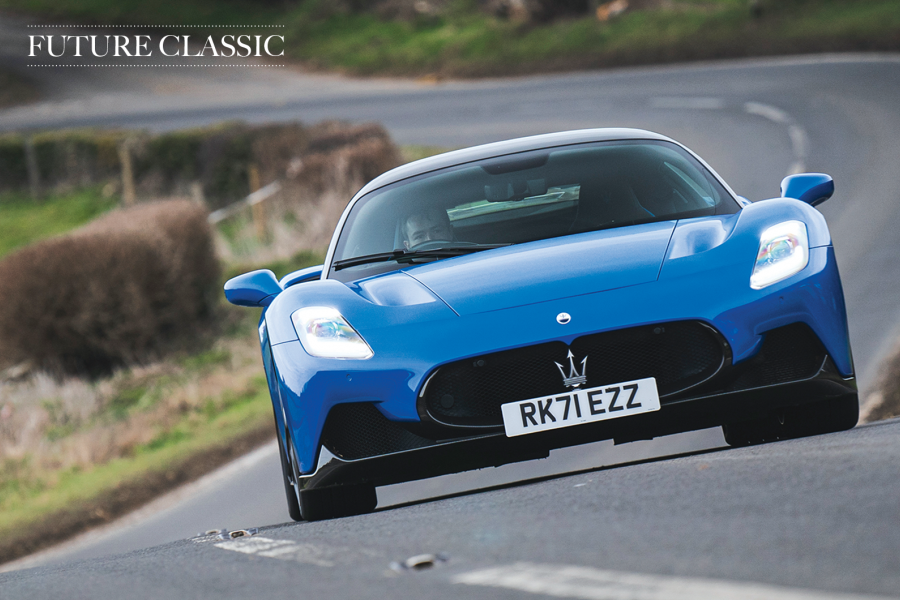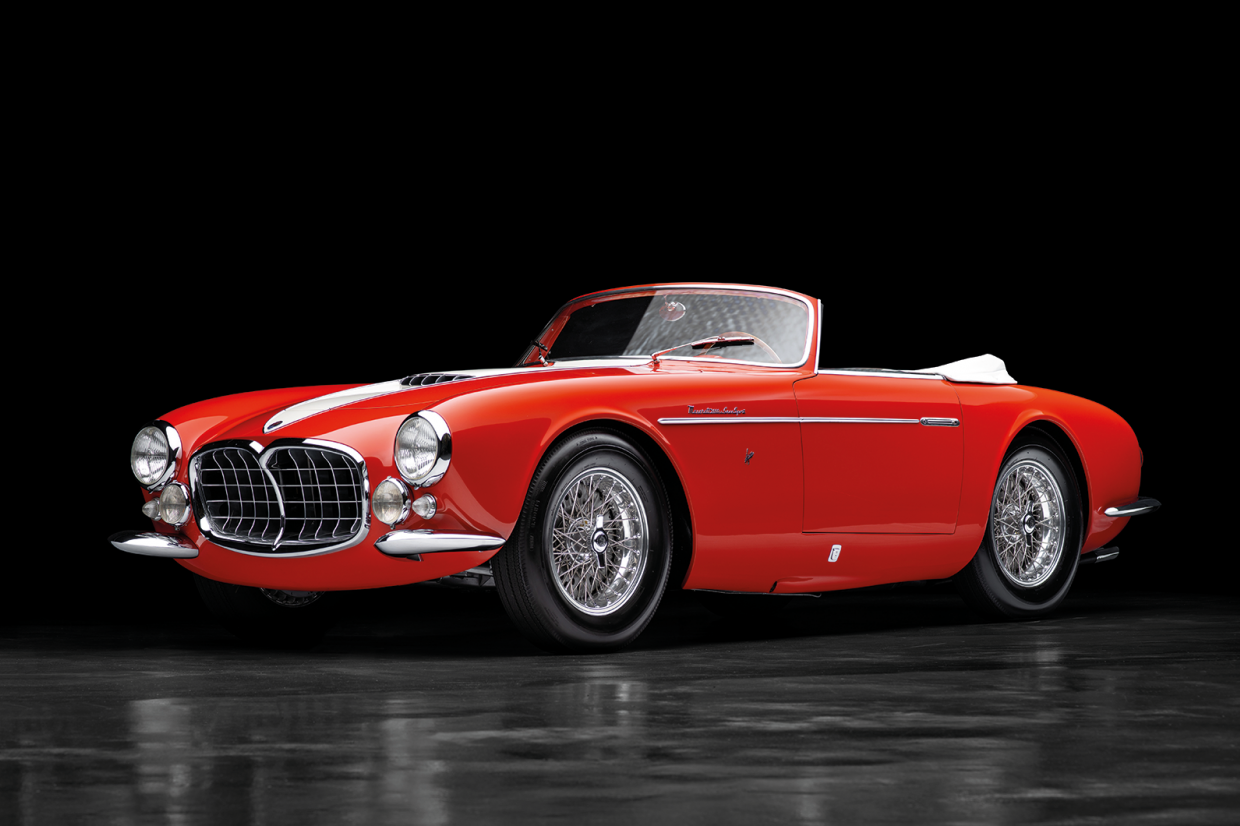
For the Latin playboy in the 1950s, a bespoke coupé was usually the preferred choice for chic motoring; no element of his debonair style could be ruffled, as long as he could stay cool in the summer heat.
Open cars were for motorsport or California export, often instigated by clever dealers such as leading light John von Neumann.
Maserati had primarily focused on racing, but after the war it needed to find further income so began offering detuned, coachbuilt road cars, starting with the A6-1500G T.
Yet somehow these early street machines didn’t encapsulate the soul of the Trident.
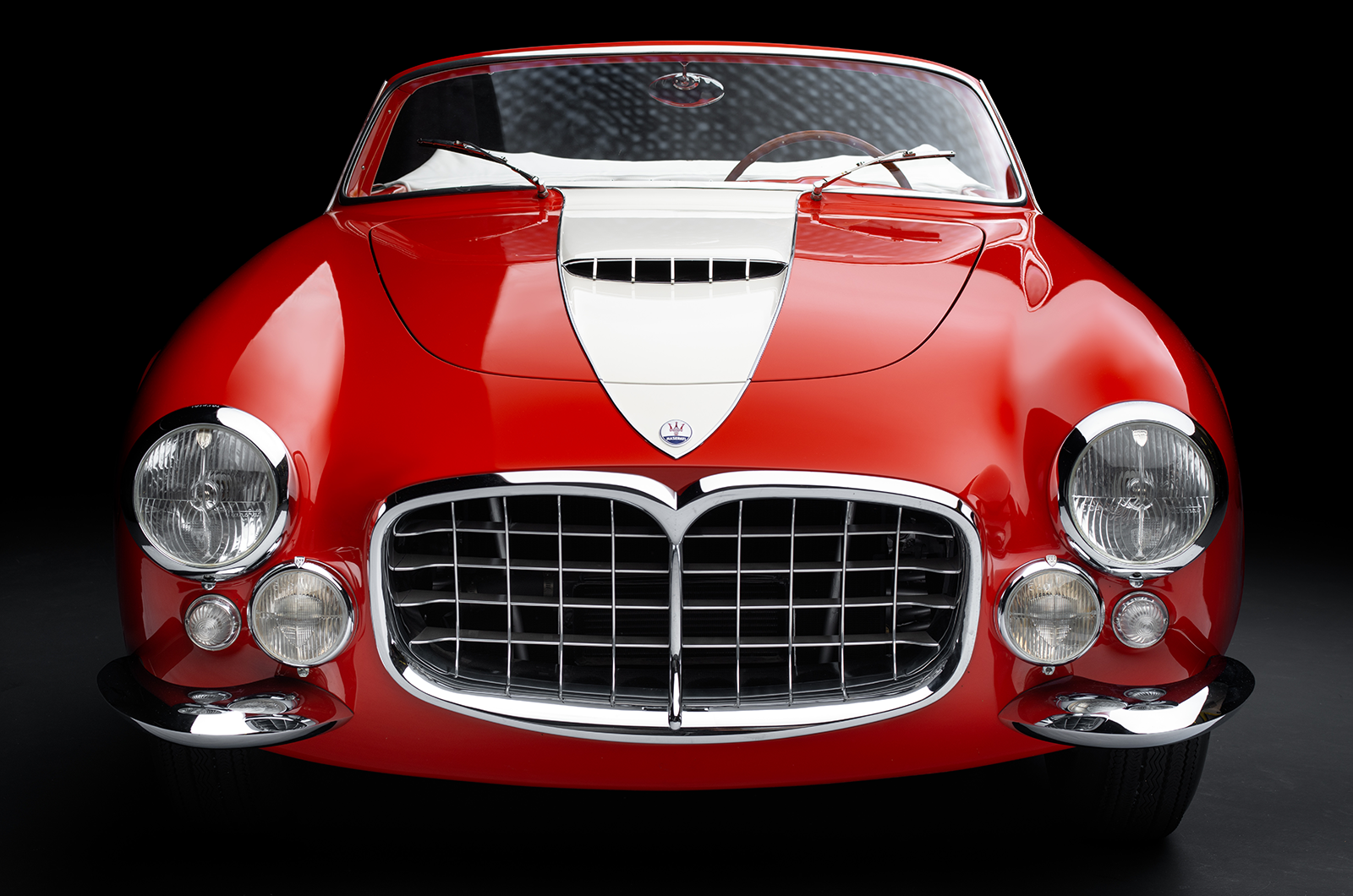
Aided by the addition of the great engineer Gioacchino Colombo to the design team, the specification and performance improved hand-in-hand with racing developments.
In 1953, along with a new 2-litre straight-six engine came a magnificent range of handbuilt machines for road and track.
Once again the tin-top gran turismo market was the main focus, but Rome-based Maserati dealer Guglielmo ‘Mimmo’ Dei had other ideas, resulting in the fabulous Frua-bodied roadster pictured here.
Just two matching cars were built, and this red-and-ivory beauty, chassis 2109, was the first and most desirable.
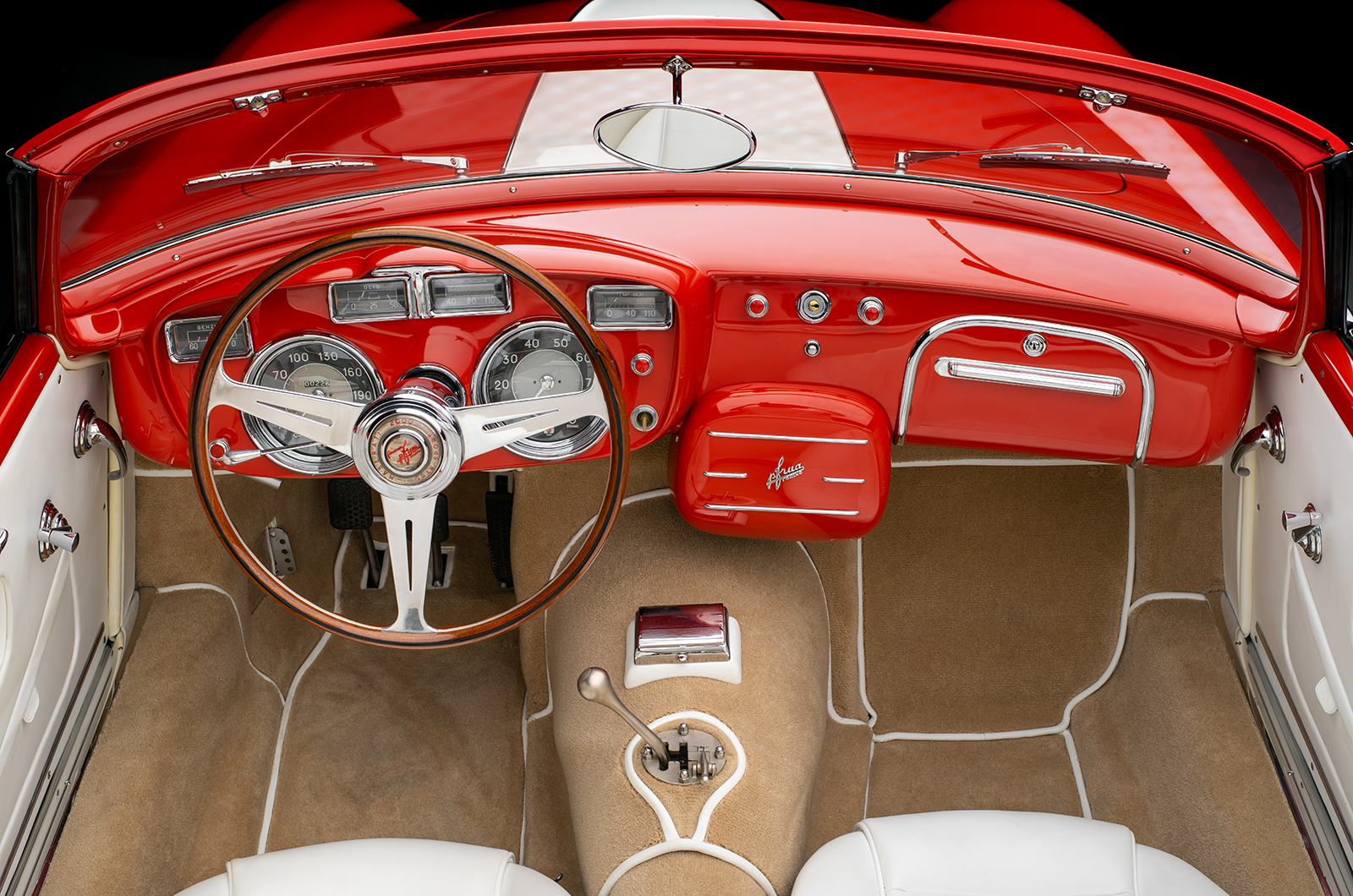
Born in 1909, Dei was an amateur competitor during the late ’30s and after WW2 his contacts with Maserati led to him opening a dealership in Rome.

